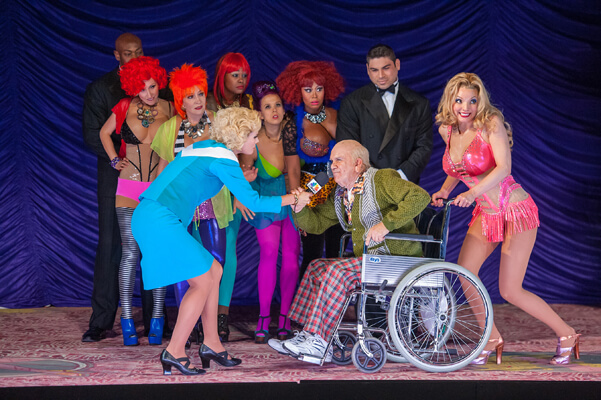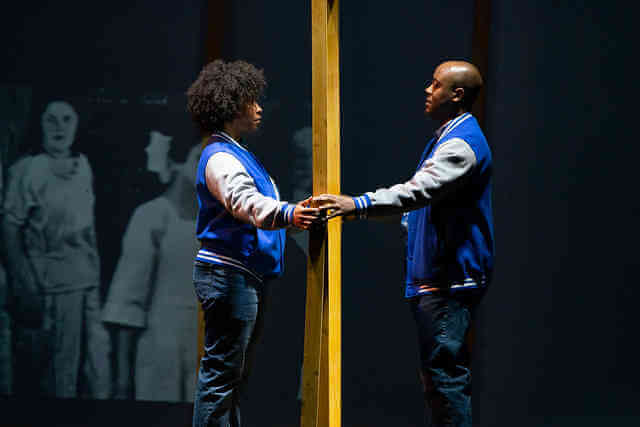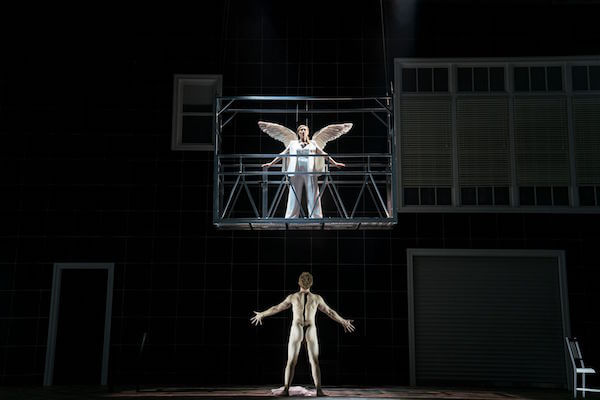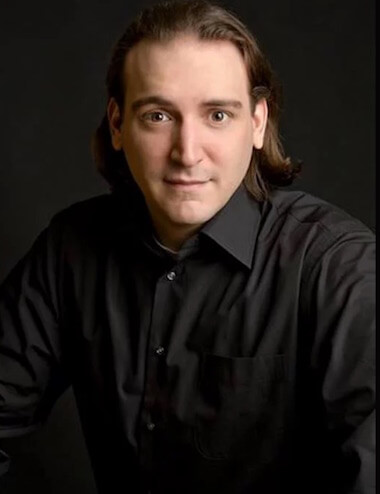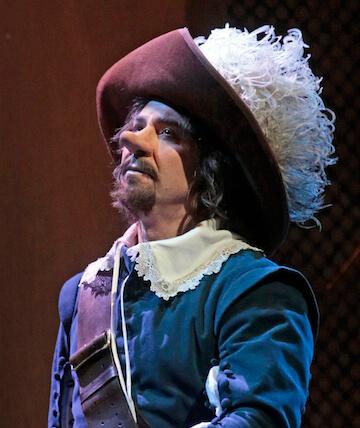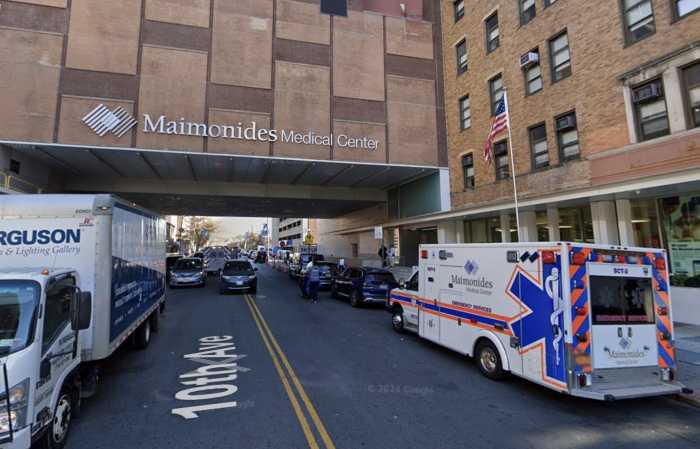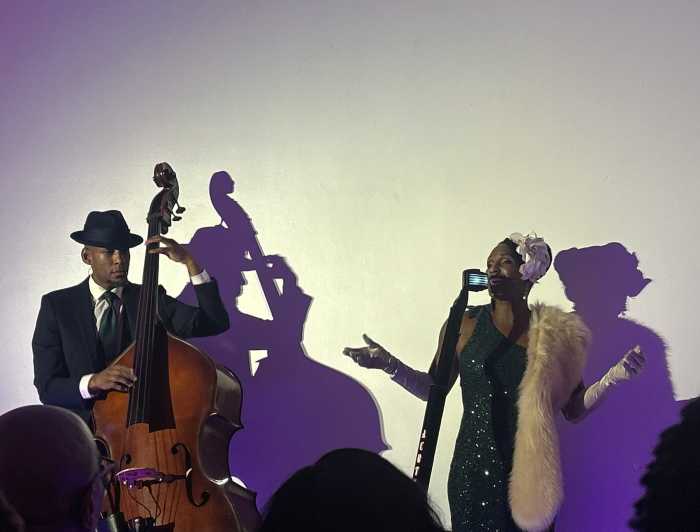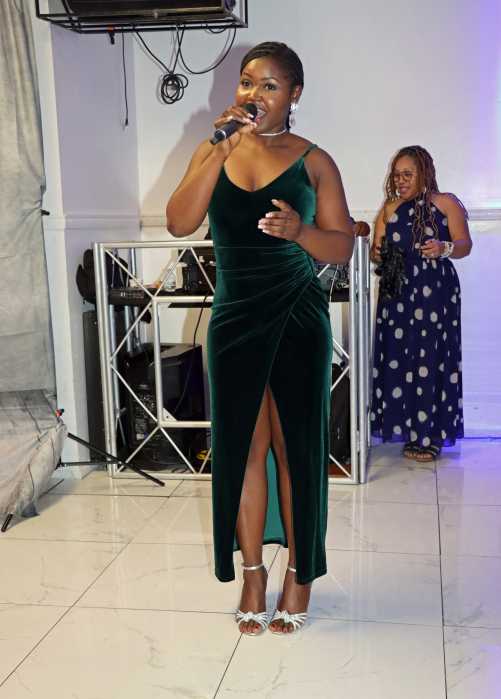Robert Brubaker and Sarah Joy Miller in Mark-Anthony Turnage’s “Anna Nicole,” City Opera’s swan song, at BAM. | STEPHANIE BERGER
After the final performance of “Anna Nicole” on September 28 and a last-minute Kickstarter campaign failed to raise necessary funds, New York City Opera declared bankruptcy, canceled the remainder of its season, and closed its doors after 70 years. The demise of the company started long before George Steel arrived — the ultimately fatal wound was the board’s decision to raid the endowment in 2008.
The main reason “Anna Nicole” got off the ground at all was the fact that it was co-produced by BAM, a solvent and well-run arts presenting organization, as part of its 2013 Next Wave Festival. British composer Mark-Anthony Turnage’s “Anna Nicole” premiered at Britain’s Royal Opera House in 2011. Europeans have a guilty fascination with the vulgar, tawdry, sensational aspects of American popular culture. Whereas we get “Downton Abbey” and RSC tours stateside, the Brits just love our action movies and bubblegum pop. Anna Nicole Smith was not only a trash culture icon but also a tragic figure — a gold-digger who found heartbreak in wealth and media fame and died young. Her immortalization as an operatic heroine has distinguished precedents. The notorious courtesan Marie Duplessis died in 1847, became the heroine of a Dumas fils novel and play, and reached artistic apotheosis six years later in Verdi’s 1853 opera “La Traviata.”
Body bags arrive for an engaging Anna Nicole and City Opera, too
There is a weird dissonance between the anarchic, witty, profane, and satiric libretto of Richard Thomas and the solidly tonal, soberly reflective, conservative score by Turnage. The composer’s style is reminiscent of the mid-20th century tonalism of Douglas Moore, Jack Beeson, and Carlisle Floyd — who all composed signature works for City Opera. Rock and country music make fleeting appearances but this is more “Willie Stark” or “Baby Doe” than “Lulu.” Thomas’ libretto follows Anna Nicole from small-town waitress to stripper — and with the addition of huge silicone knockers — to finally winning the heart and hand of nonagenarian Texas oil billionaire J. Howard Marshall II.
Oddly, Anna Nicole’s ascension to international fame via Playboy and Guess Jeans is not dramatized but only indirectly referred to in passing by the chorus. Marshall, Larry King, and Howard K. Stern appear onstage but Hugh Hefner and Paul Marciano do not — certain powerful corporate interests may well be shielded from potentially unflattering dramatic portrayals.
Act I shows Anna Nicole’s rise and ends with her wedding to the decrepit Marshall. Act II is the decline and fall — the tone darkens and the humor turns painful. The now obese and drug and alcohol-addicted media superstar is stalked everywhere by ever-multiplying cameras impersonated by the chorus. Anna Nicole loses the one person who gave meaning to her life — her son Daniel. After giving birth to a daughter (whose father Larry Birkhead is one of those faceless cameras but is not referred to at all), Anna Nicole sings a narcotized final liebestod next to the ghost of her son and is zipped up in a body bag while the stage becomes covered with debris.
The fun starts before the curtain rises — the show curtain is a hot pink satin parody of the Royal Opera’s red velvet curtain but with Anna Nicole’s initials replacing QE II’s. Richard Jones’ inventive production has elements of “Saturday Night Live” and Comedy Central spoofs — the colors are cartoonishly bright and drab ugliness lurks behind shiny nouveau riche exteriors.
A terrific cast mixes opera performers in the main roles with Broadway fixtures like Mary Testa, Ben Davis, and James Barbour in bit parts. Newcomer Sarah Joy Miller as Anna Nicole has a lighter Musetta-type voice than the role’s creator, Eva-Maria Westbroek, but is visually more convincing as a Playboy model. Miller tore into the role with uninhibited abandon and emotional truth. Mezzo Susan Bickley as Smith’s mother Virgie conveyed an embittered but deeply concerned truth teller. Rod Gilfry was a glib, ambiguous Stern and Robert Brubaker’s ringing metallic tenor embodied Marshall’s irrepressible zest for life. Steven Sloane led a fine freelance orchestra and chorus with precision and verve.
Turnage’s music might not compare with Verdi or even Floyd or Beeson at their best but “Anna Nicole” is a fun and trenchant piece of music theater. BAM’s audience mixed the young and hip with the older well-heeled operagoer. Everyone laughed at the jokes and profanity, was moved at the end, and enjoyed the show from start to finish. This could play on Broadway.
As the dying Anna Nicole sang her last words, “Made some bad choices, then made some worse choices, then ran out of choices,” it was an epitaph not only for the misspent unexamined life of Anna Nicole Smith but for New York City’s “people’s opera.” The body bag was zipped up, the last chord faded away, and a dream died.

